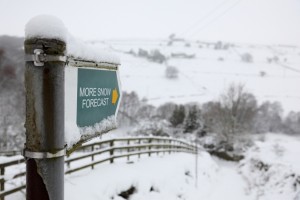With the many weeks of the holiday season behind us, the winter of 2013 is becoming another warmer winter season, pacing averages, and keeping ahead of the trends of cold weather. However, the averages are as warm as we are seeing in the Midwest, and the West coast is seeing actually colder temperatures during the middle of January of 2013. Expectations for the winter of 2013 to become a slower than expected warming winter, have actually come true.
Winter of 2013 Average but Still Mild and Warm
 Proving once again that the Siberian blasts can create deadly and frigid conditions throughout most of the United States, the winter season 2012-2013 is showing strength of cold temperatures and little precipitation. The drought of the summer of 2012 still is showcasing its strength, and in areas hardest hit by this drought, the winter of 2013 is less than snowy, more misty and rainy. The precipitation is lower and denser in pockets of the atmosphere, creating areas of intense snow or rain conditions.
Proving once again that the Siberian blasts can create deadly and frigid conditions throughout most of the United States, the winter season 2012-2013 is showing strength of cold temperatures and little precipitation. The drought of the summer of 2012 still is showcasing its strength, and in areas hardest hit by this drought, the winter of 2013 is less than snowy, more misty and rainy. The precipitation is lower and denser in pockets of the atmosphere, creating areas of intense snow or rain conditions.
Like the weather of the late 1930s, the winter of 2013 is repeating a pattern of warmth and dryness. Although hovering around average, and showing cold weather strength in the midwest and the west coast, the low temperatures of the south and the east coast have not been especially ramped up. The citrus crops of florida have not experienced a threat the entire winter of 2013.
Looking ahead of the Winter of 2013
If we are to predict how the next 6 months will pan out for the United States, the weather will be a huge impact on many of the crops, financial plans for the states, and the economic strength of the country in the months ahead. With unexpected strong storms occurring over the holiday in the southeast, there was some damage, and this could be a predictor of the season ahead.
Expectations of a warmer winter have been met, and in most of the country, with the exception of the midwest, the winter has been warm and mild. With another round of precipitation, the midwest is seeing more ice and rain than ever before.
Winter of 2013 Showing Ice belt Moving North
Usual showings of ice in the winter, and rain events, are common around the St. Louis area, and the southern parts of Kansas and Illinois. However, this winter has seen the rain occur further north of Iowa into Minnesota, Wisconsin and Michigan. This change is not common, however, could be a predictor of things to come.
With the ice, comes tree damage, more travel dangers, and the inability for planes to travel. The most dangerous threat to America can be ice, as it disrupts electrical systems. Many local municipalities are using new power poles to keep the grid working during high weight of ice and winds. These efforts are low cost preventative options that we all should consider, in light of the winter of 2013.
